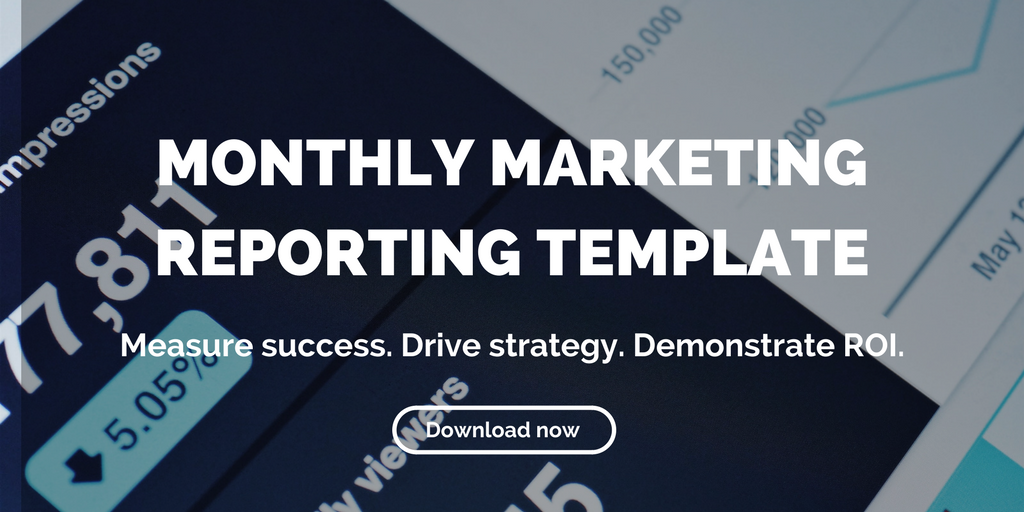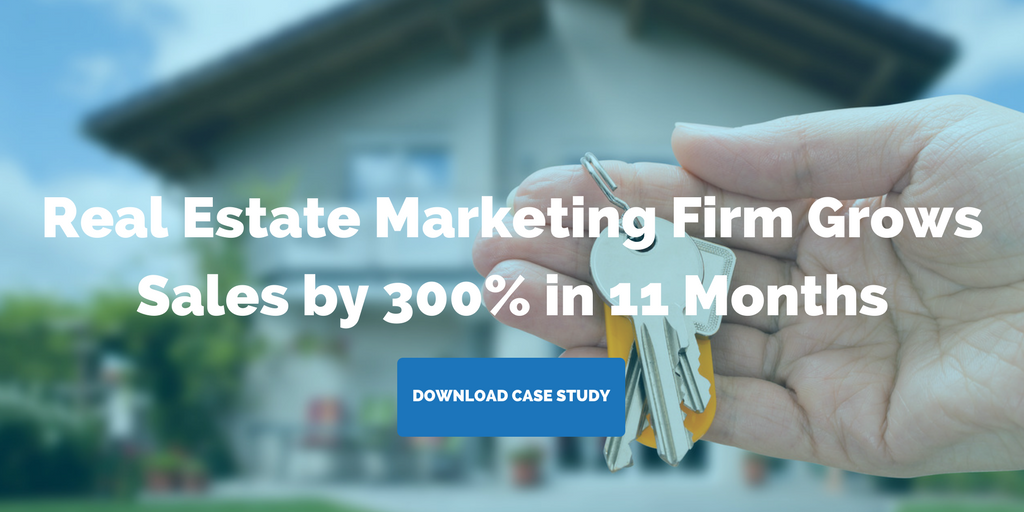Posts Tagged "analytics"

Write it Down: Why You Need a Digital Marketing Strategy
Having a documented digital marketing strategy increases brand awareness and provides a starting point for in-depth analytics.
Highlights:
- A digital marketing strategy should be clearly documented, enabling you to fine-tune and adjust sections — or the entire document — in response to analytics.
- From social media channels to blogs, enhanced customer engagement enables real estate brands to open a two-way communication with potential buyers (and renters).
- A clearly articulated digital marketing strategy is the foundation of generating qualified real estate leads.
Digital marketing for real estate has become mandatory in recent years. With over 3.2 billion users globally, the internet has opened up countless opportunities for brands to connect with new and growing audiences — and the real estate industry has benefited in a major way. According to recent market surveys, 92% of potential buyers do vigorous research online before making a home purchase.
With luxury development projects on the rise in the Boston area as well as other metros across the country, a digital marketing strategy can give developers a competitive edge. Note: The strategy should be clearly documented, enabling you to fine-tune and adjust sections — or the entire document — in response to analytics.
Benefits of a documented digital marketing strategy
Brand building
To succeed in the highly competitive and dynamic real estate industry, you need a strong and reputable online presence. Using tools like workflows, search engine optimization, and social media, real estate marketers can grow brand awareness. Digital marketing allows you to attract potential buyers from a global market. From social media channels to blogs, enhanced customer engagement enables real estate brands to open a two-way communication with potential buyers (and renters).
Higher conversion rate
Digital marketing fosters a higher conversion rate of people who visit websites or social media platforms. Why? A well-designed digital marketing strategy nurtures leads and gives them reasons to return to your platforms where pointed calls-to-action and landing pages can capture their information. Establishing your online presence will help you showcase your luxury projects, allowing home buyers to explore purchasing options. Developers with updated and informed content increase their chances of engaging potential customers who are property hunting online.
Increased exposure
It’s no secret that digital marketing helps expand organic reach and increases exposure to new audiences. Geolocation marketing takes it a step further, letting marketers customize content for specific target audiences based on their physical location. Paid advertising on Facebook and Google, for instance, includes this feature. Put to practice, it means your ads target people in certain regions (geo-targeting is based on the visitor’s IP address) or when they enter certain areas that can be as narrow as a neighborhood or a few streets (geo-fencing uses a device’s GPS location).
Lower acquisition costs
Digital marketing offers real estate marketers cost–effective options compared to traditional marketing methods. For example, in a matchup of cost per lead, digital marketing comes out on top.
Performance analysis
Digital marketing offers several analytics tools, such as Google Analytics, that help you track your marketing performance. Tracking your performance online will allow you to understand the nature of the market and the specific techniques that work for your audience. By monitoring keywords, search trends, and search volume, you can determine which keywords to use when optimizing your website.
A clearly articulated digital marketing strategy is the foundation of generating qualified real estate leads. Write it down. Refer to it. Let analytics drive change. That’s how you stand out from the competition.
Related posts:
- DIY Digital Marketing Strategy for Real Estate in Four Easy Steps
- Real Estate Marketing Strategy 2019: Retargeting
- The Metrics You Should Be Measuring in Real Estate Marketing (Hint: Not Vanity Metrics)
Posts Tagged "analytics"

For More Creative Content, Break These 4 Rules
The best way to come up with engaging and creative content is to think outside the box and, sometimes, take risks. Here are 4 rules to break to produce truly creative content for real estate marketers.
Highlights:
- Produce creative content by throwing out the template approach and start thinking about what makes you stand out.
- Don’t be afraid to showcase what you do best through different avenues, like customer or vendor testimonials.
- When you’re committed to curiosity, you naturally become a learning organization and this learning leads to more creative content.
With over 4 million blog posts published every day, you have to be really creative to drive traffic to your website and attract prospective tenants or buyers to your properties. Marketers may think they need to follow these rules, but in fact, you need to break them to craft creative content.
1. Mirror competitors
While it’s true there might be trending topics that you will want to cover, you should think more about the value proposition of your specific property and put the focus there. This will help you write creative content that stands out from your competitors and is not repeating what “everyone else is doing.” Remember, your property is unique, so your content should be too.
2. Marketing mindset
While your marketing team knows everything about your property, some of the best stories and blog content come from your other teams. Existing residents or buyers, property managers, neighborhood vendors, and local businesses often have a really good prospective or story to tell. Tap into those unique stories for creative (and personalized!) content.
3. Keep it obvious
While there will definitely be some obvious things that stand out about your property that you’re going to want to highlight, sometimes the most creative content comes from a different perspective. For example, you may want to talk about events that are taking place near your property over the summer, like rock concerts, performance art, open-mic nights, or anything else that appeals to your buyer personas. Don’t be afraid to get specific and dig a little deeper; the result will be creative content that stands out to prospective tenants or buyers.
4. Repeat success
While it’s true you should look at the analytics and build upon content that has been successful in the past, you should also be taking some risks when you’re developing your content calendar. Build in a healthy mix of what’s worked for you in the past — what resonates with your target audience — and something new, out of left field. Real estate marketers need to keep experimenting. Audiences are constantly evolving, so your content should be too.
Have you published creative content by thinking outside the box? Have you been successful?
Related posts:
- 4 Types of Content You Need to Sell Real Estate (Besides Listings)
- Infographic: Content Marketing Statistics Every Real Estate Marketer Should Know
- 10 Quick Ways to Grow Brand Awareness
Posts Tagged "analytics"

5 Effective Ways to Use Instagram for Your Luxury Real Estate Brand
With its highly visual platform and growing user base, Instagram is a natural fit for real estate marketing. Here are five ways to make Instagram work for your luxury real estate brand.
Highlights:
- Instagram posts should reflect your luxury real estate brand and maintain the overall tone you set through other marketing efforts.
- Successful brands on Instagram pay close attention to how their posts reflect their brand’s message.
- Hashtags allow your posts to be seen by users outside of your circle of followers, so using relevant, industry-specific hashtags is key in reaching new audiences.
Looking to engage with new audiences and connect with your target market? Instagram is the perfect platform for luxury real estate brands looking to expand their reach. In fact, engagement on Instagram is ten times higher than it is for Facebook, and the demographic is substantially more affluent—making it a no-brainer for luxury real estate.
But to get the most out of this highly visual platform, it’s important for real estate marketers to post the right kind of content. The content should reflect your brand and maintain the overall tone you set through other marketing efforts (i.e. your website, blog, etc.). Marketers who want to reap the benefits of marketing on Instagram need to do more than just post appealing pictures with fun filters. Here are five effective ways to make sure you’re getting the most out of your marketing efforts on Instagram.
5 effective ways to market your luxury real estate brand on Instagram
1. Focus on your target audience
Who are you trying to reach with your Instagram posts? Trying to post compelling content for an unidentified audience is like taking a shot in the dark. Knowing who your ideal buyer or tenant is allows you to create content that is informative, educational, and entertaining to that specific person.
When creating (or curating) content for Instagram, the more detailed you can be with your buyer persona(s), the more specific and effective your content can become. The personal connection is particularly crucial for real estate buyers, and understanding your target audience is key to making that connection.
2. Cultivate your brand message
For luxury real estate developers and property management companies, branding is key for target buyers (or tenants) to know about your properties and understand the lifestyle that the property offers. Creating consistent brand messaging that reflects the tone and voice of your marketing collateral helps audiences grow brand awareness.
Successful brands on Instagram pay close attention to how their posts reflect their brand’s message. Posts have an overarching theme that mirror the overall brand image. Images should do more than just promote your properties. They should add value to your luxury real estate brand’s unique story.
3. Use CTAs
Conversions, revenue, business, and profit—they all depend on the Call to Action. Don’t just post interesting content, give your followers a chance to do something with your posts. CTAs are key to the success of any online marketing initiative, including Instagram posts. Try adding CTAs to each of your posts to encourage audiences to “take an action”. Providing opportunities for followers to visit your website or download valuable resources will boost conversion rates.
4. Make the most of your hashtags
Hashtags allow your posts to be seen by users outside of your circle of followers, so using relevant, industry-specific hashtags is key in reaching new audiences. Hashtags automatically function as links, making your posts easily searchable and available to users looking for specific hashtags. For example, if a user interested in San Diego real estate clicks on #sdhomesforsale, all public posts labeled with that hashtag will show up.
As you start experimenting with adding hashtags to your social media posts, make sure to:
- Use relevant terms.
- Research trending topics as you chose your content.
- Create your own hashtags to match your luxury real estate brand.
- Make sure the audience setting on your posts is “public.”
5. Check your analytics
Many real estate businesses struggle with measuring ROI on social networks. Even for seasoned digital marketers, the collection of data is one of the most daunting tasks. But it’s important to gain insight into the who, when, and where of your Instagram traffic.
Use Instagram Insights to learn more about the people interacting with your luxury real estate brand on Instagram. You can also see which posts your audience sees and engages with the most, as well as a breakdown of demographics. Analyzing your posts will help determine what’s working for your brand and where changes need to be made.
Need help getting started with optimizing your digital marketing efforts? We’re here to help.
Related posts:
- 5 Real Estate Instagram Accounts You Should be Following
- Measure Social Media Success in Terms of Potential, not Dollar Amount
- How to Measure Social Media ROI with Google Analytics for Real Estate
Posts Tagged "analytics"

How to Explain Content Marketing ROI to Win (or Keep) Buy-In
Proving content marketing ROI can seem like a daunting task for real estate marketers, but finding and analyzing the right metrics effectively is crucial to measuring ROI, and ensuring buy-in.
Highlights:
- Talking about marketing as if it’s an art rather than a science does a disservice to your department and to your brand as a whole.
- Make sure your executives understand the nature and goals of your marketing strategy.
- The right metrics will help you track ROI, and justify executive buy-in.
Accountability and showing a solid return on investment (ROI) is everything when it comes to ensuring that your business is allocating adequate resources to marketing your brand and properties. And let’s face it, too many executives think that marketing is, at best, about supporting sales or, at worst, a department that exists to paste logos onto coffee mugs.
Writing for Marketo, Content Marketing Specialist Bryson Runser points out that as an “informed marketer, it’s your duty to infuse credibility into your organization by way of meaningful metrics that tie directly to your top and bottom line.” While the C-suite famously cares nothing about internal marketing metrics like Facebook likes or click-through rate, metrics are crucial to the success of marketing real estate. Not only that, effective use of metrics is the best way to establish the function and importance of the marketing department within your organization.
Get your audience on the same page
Before we dive into the nitty-gritty of proving content marketing ROI for the C-suite, it’s important to acknowledge that content marketing hasn’t been around all that long. It’s only in the past decade that the real estate industry has been reshaped by digital and content marketing. This means that you can’t necessarily count on the fact that your organization’s higher-ups understand exactly what content marketing is.
Take the time to make sure your executives understand not only the definition of content marketing, but also how it will help your real estate brand grow and your business achieve various specific goals. Content marketing expert Julia McCoy suggests using approachable metaphors, such as “content marketing is a vehicle, and content marketing strategy is the engine. The vehicle takes you to your destination only if the engine is in good shape.”
Numbers don’t lie
One of the main aspects of the “crisis of accountability” is a problematic view of what marketing is: “if marketing leaders insist that marketing is an art and not a science,” Runser writes,”then the department will remain isolated from other groups.” Establishing that content marketing is not only dependent upon data, but can also be measured, is key to changing that perception.
“Marketing must be able to justify their expenditures as investments in revenue and growth,” writes Runser. Of course, it’s partly a chicken-and-egg issue, since getting to the point of being able to talk about expenditures in this way does require investment from the top of your business.
We know that measuring the impact of content marketing can be tricky. But it’s not impossible. The first step is determining the right metrics to track. For more detailed ideas and analysis, check out this post, which details how to determine and use metrics for real estate marketers to measure the impact of content marketing on brand awareness.
Why are you reporting?
Collecting and reporting on content marketing ROI can feel like you’re spinning your wheels and collecting meaningless data. But it’s crucial to keep metrics focused on the main goal: to enable you and your business to make decisions that improve your marketing efforts. “This is the difference between backward-looking measurement and decision-focused management,” says Runser.
Data for the sake of data doesn’t do any good. Data should be used to shape insights, which in turn informs priorities and actions for your business. We’ve written before about the dangers of vanity metrics, which have no bearing on your bottom line but can give you an inflated sense of success.
It’s very easy to fall into the trap of meaningless data collection, especially when marketers are often struggling to prove their worthiness to the C-suite. But using metrics to improve marketing’s performance will go a long way towards winning over executives. “[B]y aligning data measurements with your company’s strategic objectives,” Runser writes, “it will be easier to allocate resources by revenue impact.”
Related posts:
- What Metrics Should You Track in Real Estate Marketing?
- The Metrics You Should Be Measuring in Real Estate Marketing (Hint: Not Vanity Metrics)
- Social Media Can Be a Strategic Weapon in Real Estate Marketing
Posts Tagged "analytics"

Measuring Content Marketing Success? Check Out Our Top 3 Posts for Analytics and ROI
Measuring content marketing success for real estate can seem like a daunting task. Our top 3 blog posts on analytics and ROI will keep you on track.
We talk a lot here at Fronetics Real Estate about the importance of a data-driven approach when it comes to measuring content marketing success for real estate. Without a documented strategy, your efforts are likely to be scattershot and aimless. To grow your business strategically, you need to track your efforts, analyze successes and failures, and determine ROI.
This year, we’ve focused on analytics and ROI several times on our blog. Measuring content marketing success can often seem daunting, so we’ve aimed to share some tools that work for us. We’ve discussed why it’s important to benchmark your content marketing efforts against competitive properties, published a guide for real estate marketers to measure that ever-elusive brand awareness, and offered up a monthly marketing reporting template to help you track the right metrics.
Here are our top three most read analytics and ROI posts for 2018.
1. What Metrics Should You Track in Real Estate Marketing? (It’s key to measuring content marketing success)
Traditional real estate marketing involved a lot of “post and pray.” That is, marketers would place ads in local publications, on billboards, and with other traditional media outlets and hope that buyers and tenants would read them and take interest.
Our monthly marketing reporting template for real estate will help you measure success, drive strategy, and demonstrate ROI. Read more.
2. Why You Should Benchmark Real Estate Marketing Against Competitive Properties
When people are searching the internet for apartments or condos, what are they seeing? Part of an effective, data-driven marketing strategy is regularly taking the time to benchmark real estate marketing against competitive properties.
We all know that competition drives results. Take Elaine Thompson and Michael Phelps. In August 2016, Thompson claimed the title of the world’s fastest woman, and Michael Phelps became the most decorated Olympian of all time. They achieved these incredible feats by continuously pushing themselves to do better — and they weren’t just tracking and measuring their personal performance. Read more.
3. How to Measure Brand Awareness: A Guide for Real Estate Marketers
When it comes to selling property — particularly luxury properties — growing brand awareness is an important goal. Prospective buyers need to know that your property exists and that it can provide the kind of lifestyle that they’re looking for.
Measuring how well you’re doing at getting the word out about your brand and property/properties is critical to optimizing your marketing strategy. But measuring brand awareness can be tricky. Read more.
A final word
Thank you for making us your go-to source for real estate content marketing insights. Please join us in 2019 to learn the latest on measuring content marketing success and everything else you need to grow your real estate business.
Related posts:
- Three Ways to Boost Your Real Estate Marketing with Video
- Infographic: Real Estate Social Media Strategies
- Video: How Content Marketing for Real Estate Can Help Sell Properties




